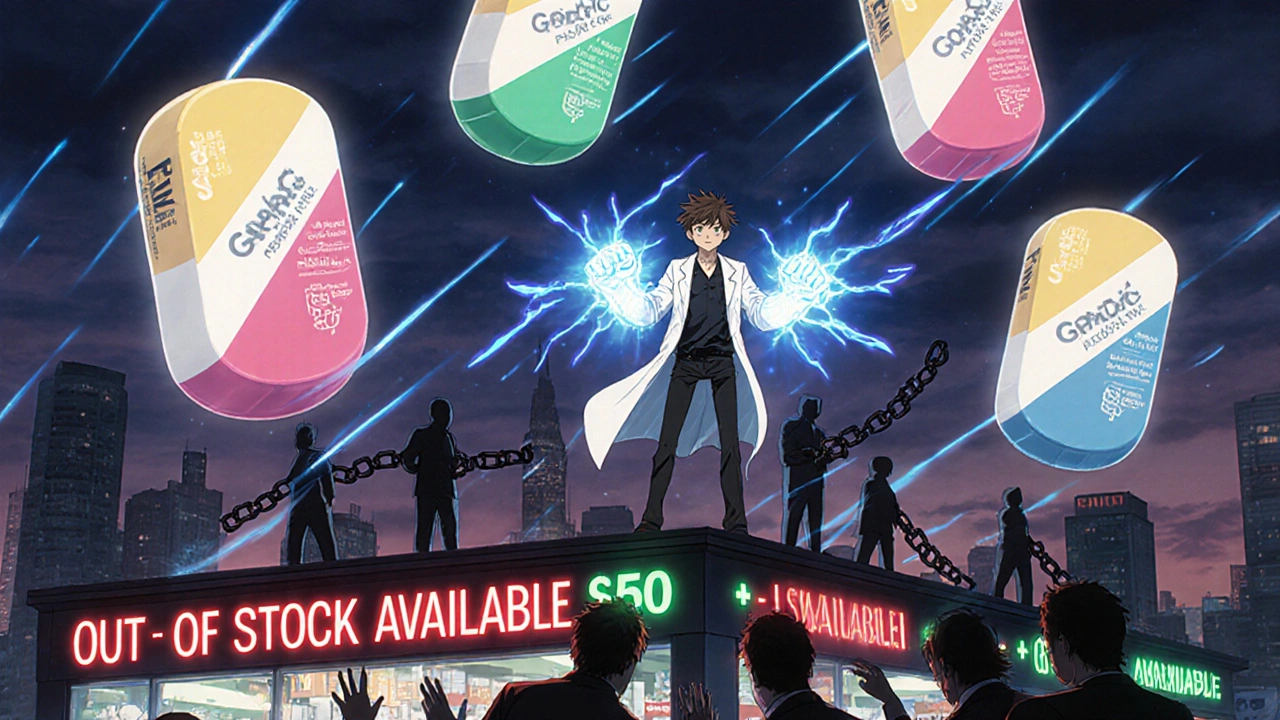
Medicaid spends billions each year on prescription drugs, but here’s the surprising part: generic drugs make up 85% of all Medicaid prescriptions, yet only 16% of the total drug spending. That’s the power of generics. But even with that kind of savings, states are still scrambling to control costs. Why? Because when a single generic drug suddenly spikes in price - say, from $5 to $50 a pill - it can blow a hole in a state’s budget overnight. And it’s not rare. In 2023, over 20 states reported shortages or sudden price hikes on critical generic medications like insulin, antibiotics, or heart drugs.
How the Federal System Already Saves Money
The foundation of all this cost control starts with the Medicaid Drug Rebate Program (MDRP), created in 1990. Under this program, drugmakers must pay rebates to states in exchange for having their drugs covered by Medicaid. For brand-name drugs, rebates are based on a complex formula tied to price increases and market share. But for generics? The rebate is simpler: manufacturers pay either 13% of the average price they charge pharmacies, or the difference between that price and their lowest price to any buyer - whichever is higher. That sounds straightforward, but here’s the catch: states can’t negotiate extra rebates on generics like they can with brand-name drugs. That means if a generic drug’s price jumps, the federal rebate doesn’t automatically adjust to match. States are stuck with the base 13% unless they take other action.What States Are Actually Doing to Cut Costs
With federal rules limiting their options, states have gotten creative. Here are the top five strategies they’re using right now:- Maximum Allowable Cost (MAC) Lists - 42 states set a cap on how much they’ll pay for each generic drug. If a pharmacy charges $12 for a pill but the state’s MAC is $8, the pharmacy gets $8. The rest? The pharmacy eats it. Thirty-one states update these lists quarterly or more often to keep up with price swings.
- Mandatory Generic Substitution - In 49 states, pharmacists must switch a patient to a generic version unless the doctor specifically says no. This isn’t just policy - it’s law. And it works. When a brand-name drug costs $200 and the generic is $12, forcing the switch saves the state $188 per prescription.
- Preferred Drug Lists - States create lists of generics they’ll cover without extra paperwork. If a drug isn’t on the list, the prescriber has to justify why. This pushes doctors toward cheaper, equally effective options. Twenty-eight states use this method.
- Price Gouging Laws - Maryland was the first to pass a law in 2020 that lets the state investigate and fine manufacturers for unjustified price hikes on generic drugs. If a drug’s price jumps 100% in a year with no new clinical data, it’s flagged. Since then, six other states have followed suit.
- PBM Oversight - Pharmacy Benefit Managers (PBMs) like OptumRx and Magellan act as middlemen between states and pharmacies. But they often take a cut of the savings. Twenty-seven states now require PBMs to report exactly how much they paid for each generic drug - and how much they charged the state. Transparency is the new weapon.
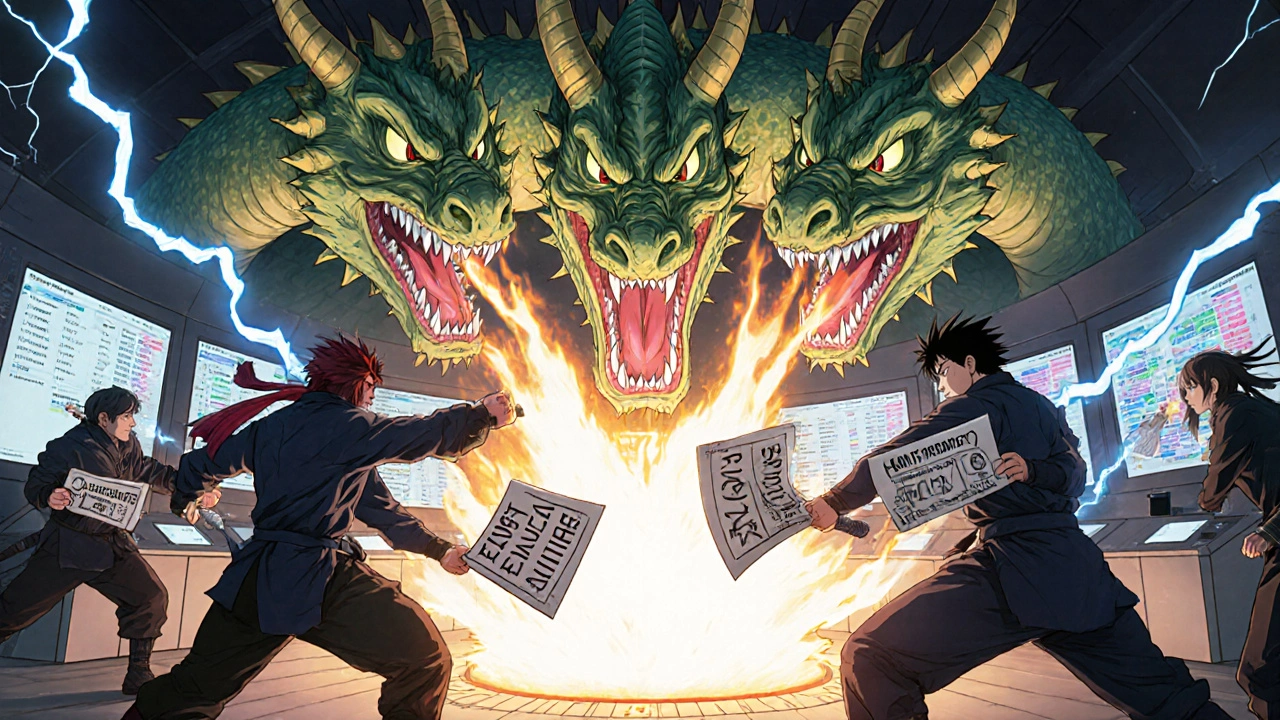
The Hidden Problem: Price Spikes and Shortages
It sounds simple - just cap prices and force substitutions. But reality is messier. In 2023, the average generic drug shortage lasted nearly five months. Why? Because the generic drug market is dominated by just three companies that control 65% of injectable generics. When one of them shuts down a factory or hits a quality issue, supply vanishes. And when supply drops, prices spike. In 2022, the price of doxycycline - a common antibiotic - jumped from $0.30 per pill to $8.70 in some states. Pharmacists couldn’t fill prescriptions. Patients went without. States scrambled to update MAC lists, but many update them only once a month. By the time the list caught up, the price had already dropped again - leaving pharmacies stuck with inventory they couldn’t get paid for. A 2024 survey of 1,200 independent pharmacies found that 74% had claims rejected or delayed because their MAC list didn’t match real-time prices. That’s not just an administrative headache - it’s a barrier to care.States Are Team Up to Fight Back
Individual states can’t out-negotiate big manufacturers. But together? They can. Oregon and Washington launched a multi-state purchasing pool in 2023, teaming up with seven other states to buy 47 high-volume generics in bulk. They didn’t just ask for a discount - they demanded transparency on manufacturing costs and guaranteed supply contracts. The result? Average savings of 22% on drugs like metformin, levothyroxine, and lisinopril. Other states are watching. Twelve states introduced bills in 2024 to create their own purchasing alliances. The goal isn’t just to save money - it’s to prevent shortages before they happen.
What’s Next? GLP-1s, Gene Therapies, and Supply Chains
The biggest new threat isn’t generics - it’s the rising cost of specialty drugs. GLP-1 medications for obesity, like semaglutide, cost $12,000 a year. Thirteen states now cover them under Medicaid, but only with strict prior authorization. If a federal rule requiring all Medicaid programs to cover these drugs passes in 2025, it could add $1.2 billion to state budgets in one year. Meanwhile, gene therapies - single-dose treatments costing over $2 million - are coming. States are already carving them out of traditional pharmacy benefits and creating special funding pools. Texas and New Hampshire are testing new risk-sharing models where manufacturers refund part of the cost if the treatment fails. But the real long-term play is supply chain resilience. By 2026, 22 states plan to stockpile critical generic drugs - antibiotics, seizure meds, dialysis solutions - just in case production halts. It’s insurance against another pandemic-style disruption.The Balancing Act: Savings vs. Access
The big question isn’t whether states should control costs - it’s how far they can go without breaking access. The Congressional Budget Office estimates that smart state policies could cut generic drug spending by $3.8 billion a year by 2027. But they also warn: if states push too hard, manufacturers may quit the market. A 2025 Avalere Health report found that aggressive MAC lists and price caps already caused some manufacturers to stop making low-margin generics entirely. That’s why the best-performing states don’t just cap prices - they work with pharmacies, manufacturers, and patients. They update MAC lists weekly. They pay pharmacists fairly. They reward companies that guarantee steady supply. And they track shortages in real time, not quarterly reports. The goal isn’t to win a budget battle. It’s to make sure the person who needs their blood pressure pill gets it - and pays nothing more than they should.Do all states have the same generic drug policies?
No. While all 50 states and DC cover prescription drugs in Medicaid, each state sets its own rules for how much they pay for generics. Some use strict Maximum Allowable Cost lists, others rely on preferred drug lists or mandatory substitution. A few, like Maryland, have laws against price gouging. There’s no national standard.
Why can’t states negotiate better rebates on generic drugs?
Because federal law limits rebates for generics to a fixed formula - either 13% of the average price or the difference between that price and the manufacturer’s best price. Unlike brand-name drugs, states can’t sign separate deals for extra discounts on generics. That makes them more vulnerable to price spikes.
What’s a Maximum Allowable Cost (MAC) list?
A MAC list is a state’s official price cap for each generic drug. If a pharmacy charges more than the MAC, Medicaid only pays the capped amount. The pharmacy absorbs the rest. MAC lists help control costs, but if they’re not updated often enough, they can block access when prices drop.
How do generic drug shortages affect Medicaid patients?
Shortages mean patients can’t get their medication on time - sometimes for months. In 2023, the average shortage lasted 147 days. Patients may be switched to more expensive alternatives, face delays in treatment, or go without needed drugs. States with stockpiling programs are trying to prevent this.
Are state price controls making generic drugs harder to find?
Sometimes. Manufacturers say aggressive price caps make it unprofitable to produce low-margin generics, especially if production costs rise. Some companies have stopped making certain drugs entirely. Experts warn that while cost control is necessary, overly strict rules can reduce supply - which ends up costing more in the long run.
What’s the future of Medicaid generic drug policies?
States are moving toward more proactive strategies: real-time price monitoring, multi-state bulk purchasing, strategic drug stockpiles, and tighter PBM oversight. By 2026, over 20 states plan to have emergency stockpiles of critical generics. The focus is shifting from just cutting prices to ensuring reliable supply - because a drug that’s cheap but unavailable isn’t saving anyone anything.
Write a comment
Your email address will not be published.
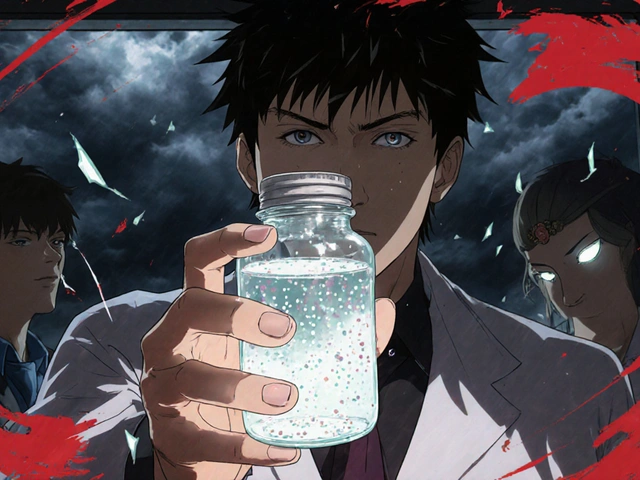
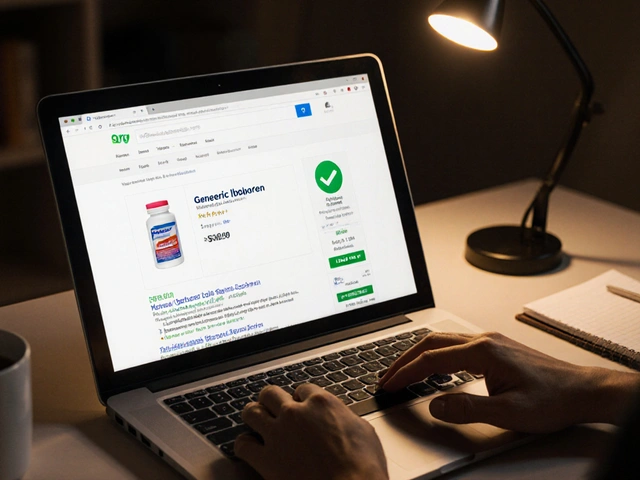

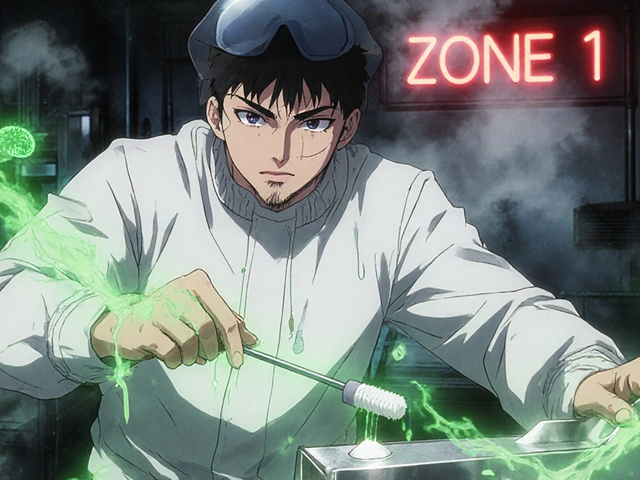

11 Comments
So let me get this straight - we’re letting three corporations control 65% of injectable generics and then act shocked when prices go nuclear? This isn’t policy, it’s corporate hostage-taking. And don’t even get me started on PBMs skimming off the top like vultures. We need to break these monopolies, not tweak MAC lists like it’s a spreadsheet game. #MedicaidFail
India makes 70% of the world’s generics - why are we letting American pharma play games with our patients? 🤬 If they can’t produce cheap meds without crying about margins, let them get out of the game. We’ve got factories in Hyderabad churning out perfect pills for $0.05. Stop being soft. 🇮🇳💊
i think the mac lists are a good idea but theyre always lagging behind and it messes up small pharmacies who just wanna get paid. like last month my local place got stuck with 200 bottles of doxycycline they bought at $6 and then the state cap dropped to $3.50. they lost like $800. nobody talks about that side. 😔
Oh wow, so we’re just now realizing that profit-driven healthcare is broken? Shocking. Let me guess - the same people who got rich off opioid prescriptions are now lobbying to keep generic prices high? Of course they are. And the PBMs? They’re not middlemen - they’re middlemen who got a PhD in theft. The system isn’t broken, it’s designed this way. Fix it? Nah. We’ll just keep pretending MAC lists are a solution while the real villains laugh all the way to the Caymans. 🤡
They’re hiding something. Why does every price spike happen right after a new CEO takes over? Why do shortages always hit right before a congressional vote? And why is the same 3 companies always the ones affected? This ain’t coincidence. This is a coordinated strike to scare states into letting them raise prices. Big Pharma + Big Government = Big Betrayal. I’ve seen the documents. They’re coming for your insulin next. 🕵️♂️
It’s not about whether states can cap prices it’s about whether we as a society believe that a person’s life should be contingent on a pharmaceutical balance sheet. If a man needs metformin to not die and the state caps it at $4 but the manufacturer charges $40 because they can - then we have failed as a civilization. The MAC lists are a bandage on a severed artery. We need to restructure the entire relationship between public health and private profit. Not just tweak the numbers. Not just update quarterly. We need to ask - what kind of world do we want to live in? And then build it.
The Medicaid Drug Rebate Program (MDRP) was designed to provide baseline cost containment, but its structural limitations for generics are a glaring legislative oversight. The fixed 13% rebate, coupled with the prohibition of state-level negotiation, creates systemic vulnerability to supply-chain shocks and oligopolistic pricing. MAC lists, while administratively pragmatic, are reactive, not predictive. The real innovation lies in multi-state bulk purchasing pools - which leverage economies of scale, enforce transparency, and introduce contractual supply guarantees - thereby transforming Medicaid from a passive payer into an active market participant. This is not policy adjustment - it’s market re-engineering.
I just talked to my cousin in rural Kentucky. She’s on Medicaid. Her blood pressure med jumped from $3 to $47 last year. She skipped doses. She’s 58. She’s scared. And the pharmacy? They didn’t even tell her why. We’re talking about real people here - not spreadsheets. I get that states need to save money, but if saving money means someone doesn’t get their pill? Then we’re not saving - we’re stealing. Let’s fix this before someone dies because a bureaucrat forgot to update a list.
OMG I CAN’T BELIEVE THIS IS STILL HAPPENING. 😭 Like, I just got my dad’s levothyroxine bill and it was $120. TWELVE ZERO. He’s on SSDI. He’s 72. He cried. I cried. And now I’m screaming into my pillow because some CEO in New Jersey thinks $8.70 for doxycycline is ‘fair’. 🤯 This isn’t capitalism. This is a horror movie and we’re all stuck in it.
Let’s be real - the fact that we’re even having this conversation means we’ve already lost. We’ve turned healthcare into a commodity and then acted surprised when the market failed the most vulnerable. MAC lists? Mandatory substitution? These are just bandaids on a hemorrhage. The real solution is to treat generic drugs like public infrastructure - like roads or water. Not a profit center. Not a bargaining chip. A right. And if manufacturers won’t play fair? Then the government should make them. Or make their own. We’ve built nuclear submarines and moon rockets. We can make a $0.10 pill. We just have to choose to.
They’re using this to push digital health records and AI prescribing. You think these price spikes are accidents? No. They’re forcing you to use their apps. They want you hooked on their systems so they can track you, control your meds, and sell your data. That’s why they’re letting shortages happen - to make you desperate enough to sign up for their ‘solution’. Watch your back. This isn’t about drugs. It’s about control.